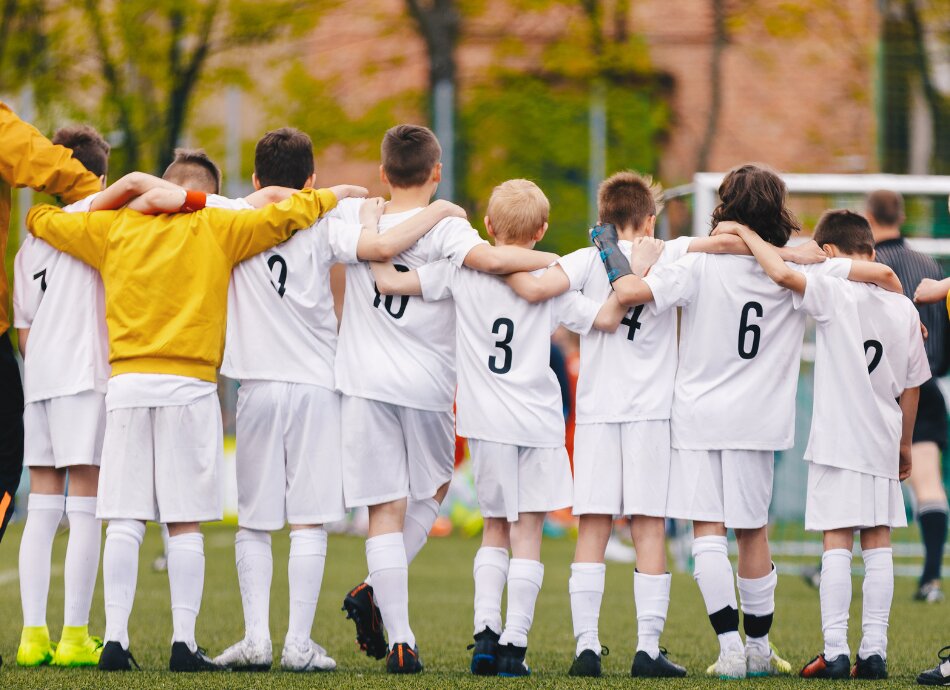1. Don’t rush into it
If it’s been a while since you played a vigorous sport such as basketball, make sure you ease yourself into it. It could be a good idea to have a health check-up with your healthcare provider first, to make sure everything is in order and to discuss your fitness and exercise plan. This is especially important if you have an underlying health condition like asthma.
Work on your fitness beforehand or try practising the game or playing the game just for short periods then gradually build up. You don’t want to suddenly launch into a whole game if you’ve never played or haven’t played for a while as you’ll be more likely to injure yourself.
2. Get the correct gear
When playing sport, make sure you have the correct gear. For example, your footwear needs to provide good support, fit properly and be appropriate for the sport you’re playing. Helmets, pads and mouth guards should fit snugly and properly. Wearing clothes that allow you to move freely is good too and, for women, a good sports bra is an essential.
Teach kids to stay safe by making sure they're supplied with (and wear) proper fitting gear such as helmets, wrist guards, knee pads, mouth guards etc, too.
3. Focus on fun and variety
This is especially important if you're encouraging your tamariki into sport. The goal is to focus on a love of sport and the enjoyment it brings, rather than making them play something they just aren't into. Encourage variety – kids can try different sports and play in different positions throughout their school years.
ACC recommends that tamariki avoid playing a single sport for more than 8 months of the year. The number of hours kids spend doing organised sport each week shouldn't exceed their age, eg, a 10-year-old should do no more than 10 hours of sport and PE across their week.
There is also growing evidence that maintaining a broader base of sports and specialising later can help develop a strong skill base and a lifelong enjoyment of sport and activity.
4. Warm up properly
Warming up for a good 5–10 minutes gradually gets your heart rate up, increases blood flow to your muscles and loosens up your joints. It prepares your body for exercise and helps prevent injuries. Light jogging, brisk walking or jumping are good ways to warm up. Gentle stretching prepares the muscles for exercise and also helps prevent injuries. Leg and arm stretches are important to avoid pulling muscles such as your hamstrings. ACC has developed a warm up guide(external link) to help keep athletes injury free.
5. Warm down properly
Warming down is just as important as warming up. Stopping vigorous exercise suddenly can increase your chance of injury. You need to gradually bring your heart rate down and warm your muscles down. Warming down properly also helps to prevent sore muscles the next day.
Warming down exercises should also take about 5–10 minutes. It’s a good idea, too, to make sure you don’t suddenly get cold after exercising. After warming down, put on a light sweatshirt to help your body adjust to a cooler temperature.
6. Don’t play if you’re injured
If you have any kind of injury, strain or pain, don’t play. It’s better to miss a game so you can rest and recuperate than play and run the risk of aggravating your injury and making it worse. Remember if you do more damage it's likely to take even longer to get better so it will take longer to get back to full fitness and back into the game.
7. Know the rules
It may seem obvious, but you should know the rules of the game you’re playing. Many rules that are in place in contact sports (eg, rugby), are there to keep players safe. It’s especially important for children to understand the rules to help avoid things like collisions and dangerous tackles.
This extends to other sports and activities. Talk to your kids about how to be safe on a trampoline. Starship guidelines(external link) suggest the rule is ‘one at a time’ because there is plenty of evidence that multiple users lead to more accidents.
8. Stay hydrated
Remember to stay hydrated when playing sport. Water is the best option. Be wary of sports drink as they often contain a lot of sugar and additives. Drink water before you play sport, during if possible, and after to ensure your body stays hydrated.
9. Asthma and sports
Sports can help people with asthma because exercise strengthens the breathing muscles in your chest. But some sports and activities are better choices than others. Golf, gentle biking, baseball and gymnastics might be less likely to trigger asthma flare-ups than endurance sports, or games that demand a lot of energy like hockey, football or rugby.
Make sure you or your kids have medication or an inhaler with them at all times.
10. Prepare for other active pursuits too
These tips also apply to any activities that require physical fitness and have associated risks. So think about them when you head out on your bike, to kick a ball around the park, to ride a horse or kayak round the bay.







